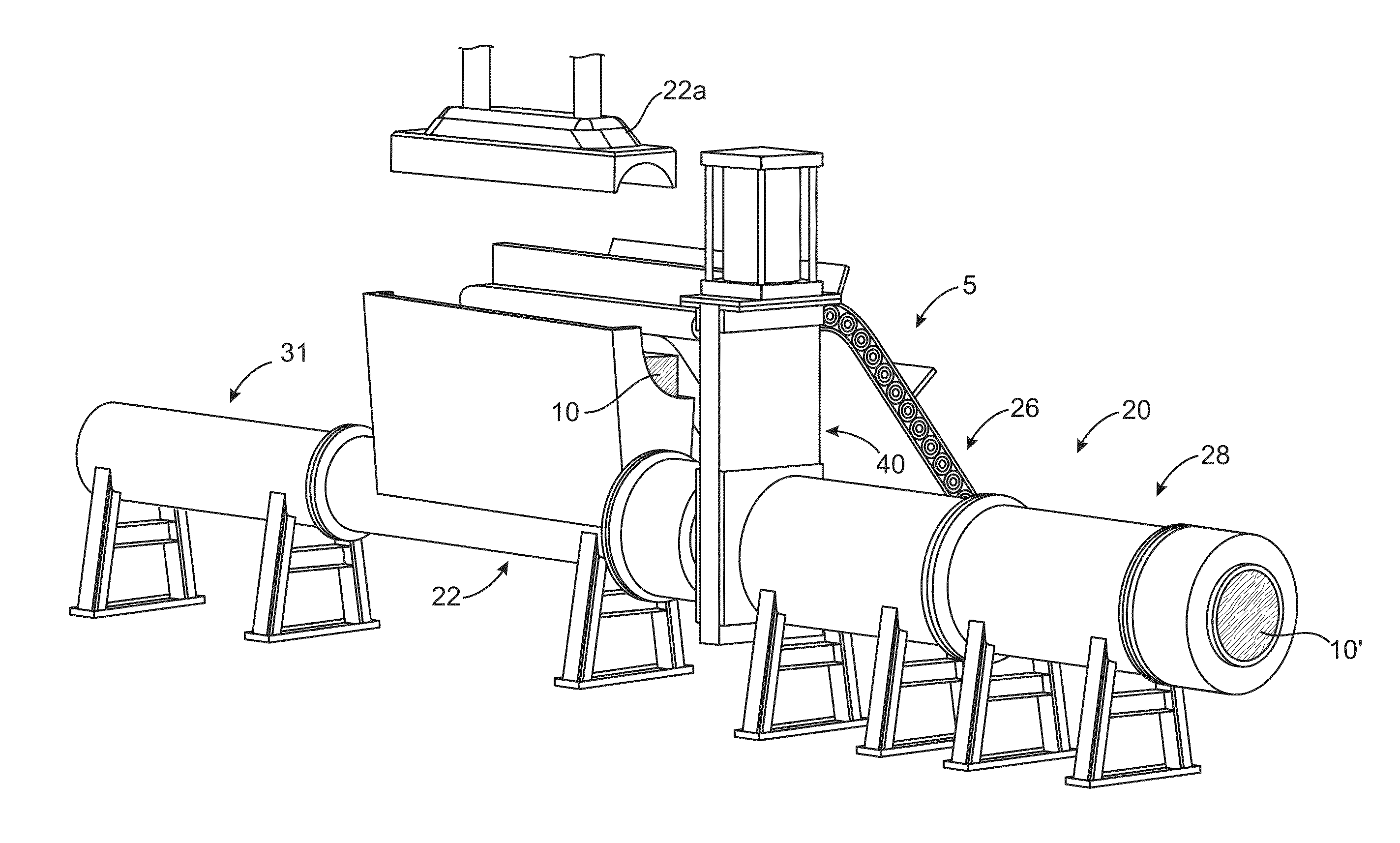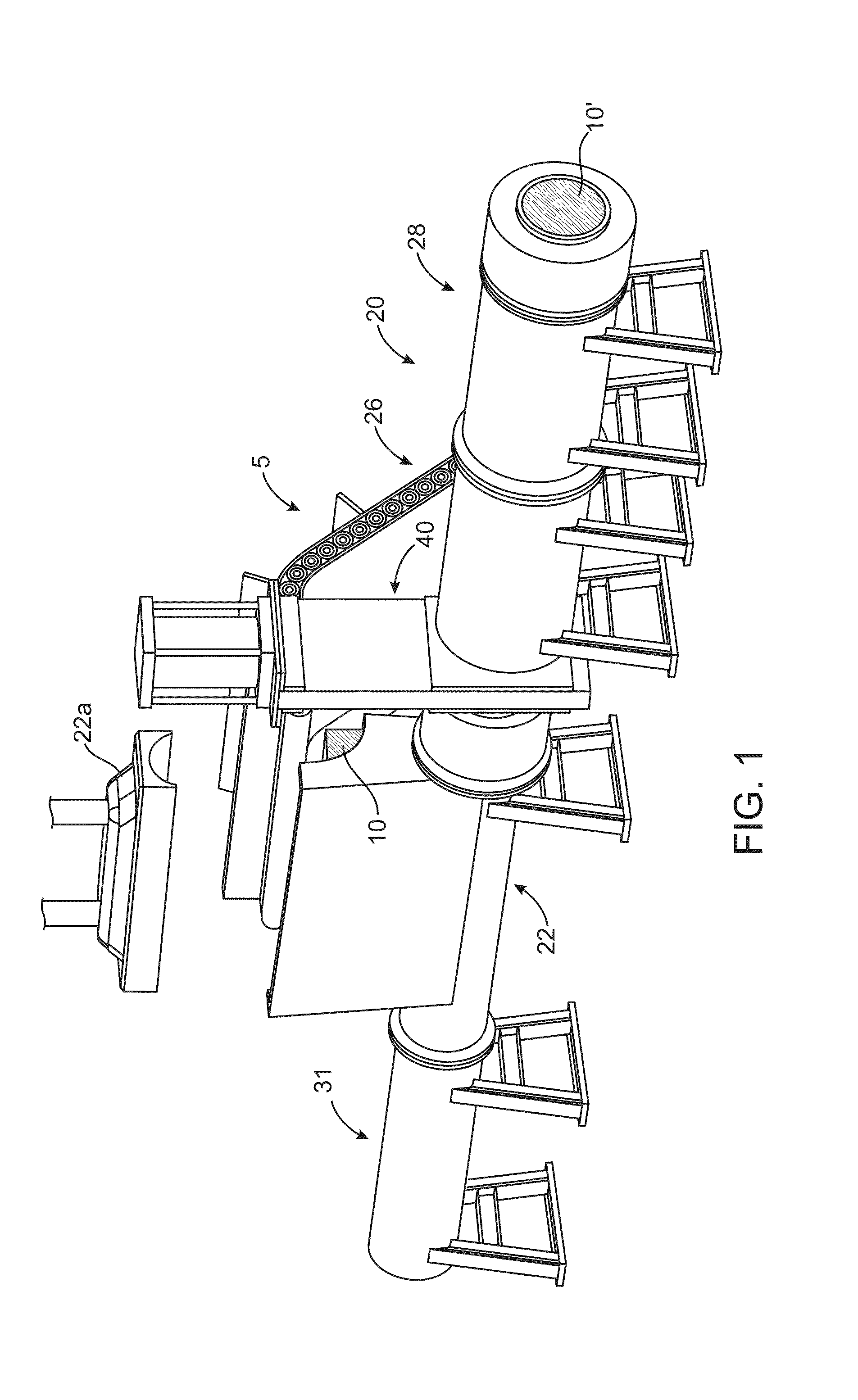Method and Apparatus for Material Densification
- Summary
- Abstract
- Description
- Claims
- Application Information
AI Technical Summary
Benefits of technology
Problems solved by technology
Method used
Image
Examples
Embodiment Construction
[0040]The discussion proceeds as follows. Preferred embodiments of a system and process for densification of biomass material are discussed first with reference to FIGS. 1-7. Next, laboratory experiments are discussed. These experiments were done to make preliminary estimates of process parameters, such as heating and cooling times, for logs. Next discussed is a full-scale field test of a compactor for biomass material. From the field test conclusions are reached regarding the various parameters associated with the densification process and modifications, types of material, etc.
[0041]FIGS. 1-7 depict a compactor and steps associated with the densification of a lignocellulosic biomass material according to the disclosure. The compactor receives the lignocellulosic biomass material in the form of a bale and converts the bale into a compacted, densified form which, for the sake of convenience shall be called a log. The term “log” is not intended to be limiting as to its final form. Rat...
PUM
| Property | Measurement | Unit |
|---|---|---|
| Mass | aaaaa | aaaaa |
| Mass | aaaaa | aaaaa |
| Time | aaaaa | aaaaa |
Abstract
Description
Claims
Application Information
 Login to View More
Login to View More - R&D
- Intellectual Property
- Life Sciences
- Materials
- Tech Scout
- Unparalleled Data Quality
- Higher Quality Content
- 60% Fewer Hallucinations
Browse by: Latest US Patents, China's latest patents, Technical Efficacy Thesaurus, Application Domain, Technology Topic, Popular Technical Reports.
© 2025 PatSnap. All rights reserved.Legal|Privacy policy|Modern Slavery Act Transparency Statement|Sitemap|About US| Contact US: help@patsnap.com



